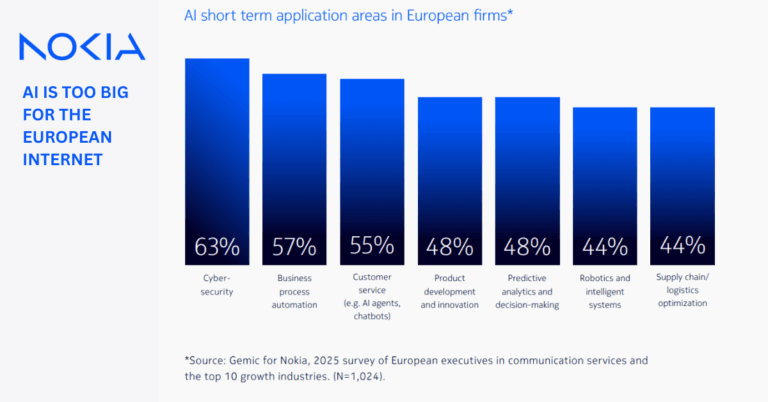Newmont’s Bold Shift to Private 5G in Mining Operations
Newmont Corporation, the world’s leading gold company, is taking a bold step forward by replacing its existing Wi-Fi infrastructure with next-generation 5G wireless networks at its major mining operations. This strategic move comes on the heels of a successful private 5G trial conducted at its Cadia mine in New South Wales, Australia, which showcased the transformative potential of 5G in enhancing safety and operational efficiency in both underground and surface mining.
Overcoming Wi-Fi Limitations in Underground Mining
Prior to the 5G trial, Newmont’s mining operations were heavily reliant on Wi-Fi to manage remote-controlled and autonomous machinery, such as ore loaders and drilling rigs. However, this Wi-Fi setup presented significant challenges. Underground, the Wi-Fi connections were plagued by unreliable and unpredictable performance, especially under heavy data load. Upload speeds were capped at 20-30 Mbps, which was insufficient for the simultaneous operation of multiple machines. The limited bandwidth led to frequent false automation safety stops due to packet loss, disrupting operations and posing safety risks.
Newmont’s Private 5G Trial: Enhancing Safety and Efficiency
In response to these challenges, Newmont launched a trial of 5G Private Networks in partnership with Ericsson and Telstra Purple at its Cadia mine. The trial marked a significant departure from the limitations of Wi-Fi. Utilizing Ericsson’s Private 5G, Newmont achieved upload speeds of approximately 90 Mbps along underground access drives and declines, and an impressive 150 Mbps upload and 500 Mbps download on extraction drives. This leap in connectivity was crucial for the reliable operation of remote-controlled and autonomous mining systems, which depend on real-time data transmission.
The deployment also extended to surface-level communications, where 5G New Radio (NR) technologies were tested. Innovations such as 64T64R Massive MIMO, beamforming, and beam-steering provided a significant boost in throughput, particularly over the extended distances typical of surface operations.
Cadia Mine Trial: Proof of Private 5G’s Transformative Power
The trial results at Cadia mine were overwhelmingly positive, prompting Newmont to expand the use of 5G across its global network of tier-one mines.
According to Suzy Retallack, Newmont’s Chief Safety and Sustainability Officer, “The trial results show the extraordinary potential of 5G to improve safety, increase the number of machines that can be operated on a single network, and boost production efficiencies in underground mining.” The success of this trial has solidified 5G’s role in Newmont’s communication strategies for both underground and surface operations.
Why Newmont Chose Private 5G Over Wi-Fi
Newmont’s choice to transition from Wi-Fi to Private 5G was driven by the need for a more robust, scalable, and reliable network solution that could meet the demanding requirements of modern mining operations. The trial also included the use of advanced 5G technologies on the surface, demonstrating the potential of 5G to deliver high throughput and reliable connectivity even in the challenging environment of large-scale surface mining.
Key Benefits of Private 5G for Newmont’s Mining Sites
The adoption of 5G at Newmont’s mining sites brings numerous benefits:
- Enhanced Safety: 5G’s reliable connectivity minimizes the risk of false automation safety stops, significantly improving operational safety.
- Increased Efficiency: The higher data speeds and capacity of 5G allow for the simultaneous operation of more autonomous and remote-controlled machinery, leading to improved productivity.
- Global Scalability: The trial’s success has encouraged Newmont to plan for the deployment of 5G across its global network of tier-one mines, enhancing both underground and surface operations.
How Private 5G is Enabling the Mining Industry
The successful implementation of 5G at Newmont’s Cadia mine is a major milestone not just for the company, but for the mining industry as a whole. As noted by Manish Tiwari, Head of Private Cellular Networks at Ericsson, “5G is enabling rapid global transformation of industry, supporting digitalization and movement towards automated, more efficient, and safer operations across a number of sectors.” The broader mining industry, which has traditionally been slow to adopt new technologies, is now poised to benefit from the safety and efficiency improvements that 5G offers.
Newmont’s Leadership in Mining Tech Innovation
Newmont is leading the charge in the mining industry by embracing cutting-edge technology to enhance safety and efficiency. By phasing out Wi-Fi in favor of 5G, Newmont is setting a new standard for operational excellence in mining, demonstrating a commitment to leveraging technology for safer, more productive mining operations.
The Critical Role of Ericsson and Telstra in Newmont’s Private 5G Success
The success of Newmont’s 5G initiative at Cadia was made possible through close collaboration with Ericsson and Telstra Purple. Ericsson provided the necessary 5G technology and expertise, while Telstra Purple, the system integration division of Australian operator Telstra, played a critical role in supplying telecom equipment and spectrum for the trial. This partnership was instrumental in overcoming the challenges posed by the underground mining environment.
Newmont’s Private 5G Expansion: Current Status and Future Plans
Following the successful trial at Cadia, Newmont has applied to the Australian Communications and Media Authority (ACMA) for Area Wide Licenses to extend and embed the use of 5G technology across all its Australian operations. The company is also planning to roll out 5G networks across its global network of tier-one mines, which includes 14 sites across four continents. This expansion is expected to unfold over the coming years, as Newmont continues to integrate 5G into its operational framework.
Industry Endorsements of Newmont’s Private 5G Initiative
The trial has received strong endorsements from key stakeholders within Newmont and its partners. The demonstrated benefits of 5G in improving safety and productivity are likely to inspire other mining companies to consider similar initiatives, potentially leading to widespread adoption of 5G technology in the industry. Newmont’s pioneering efforts have firmly established 5G as a critical component of future mining operations.
As Newmont continues to lead the way with the deployment of 5G Private Networks, the mining industry is on the brink of a safer, more efficient, and technologically advanced future.







































